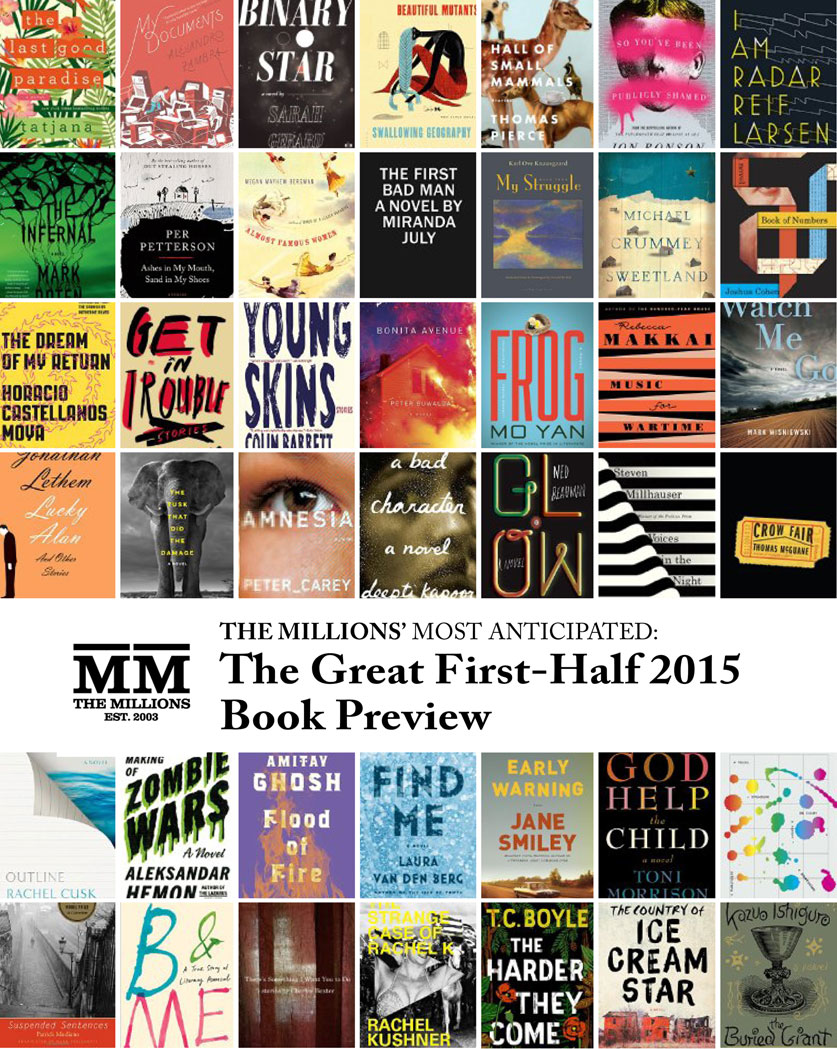
Last year offered many treats for readers: hotly anticipated new books by David Mitchell and Marilynne Robinson; the emergence of our own Emily St. John Mandel as a literary superstar; the breakout success of Anthony Doerr. 2015 offers more riches. This year we’ll get to crack open new books by Jonathan Lethem, Kelly Link, Kazuo Ishiguro, Kate Atkinson, Toni Morrison, Aleksandr Hemon, and Milan Kundera. Our own Garth Risk Hallberg will have his much anticipated debut on shelves later this year. Look beyond the hazy end of summer 2015 and Jonathan Franzen will be back with a new novel. All of these and many more are the books we’re looking forward to this year.
The list that follows isn’t exhaustive—no book preview could be—but, at 9,000 words strong and encompassing 91 titles, this is the only 2015 book preview you will ever need. Scroll down and get started.
January:
 Amnesia by Peter Carey: Carey’s new novel uses a cyberattack as the lens through which to consider the often-fraught history of the relationship between the United States and Australia. A radical hacker releases a worm into a computer system that governs both Australian and American prisoners. The doors of five thousand prisons in the United States are opened, while in Australia, hundreds of asylum-seekers escape. An Australian journalist, determined to figure out the motivation behind the attack and trying to save his career, struggles to get the hacker to cooperate on a biography. (Emily)
Amnesia by Peter Carey: Carey’s new novel uses a cyberattack as the lens through which to consider the often-fraught history of the relationship between the United States and Australia. A radical hacker releases a worm into a computer system that governs both Australian and American prisoners. The doors of five thousand prisons in the United States are opened, while in Australia, hundreds of asylum-seekers escape. An Australian journalist, determined to figure out the motivation behind the attack and trying to save his career, struggles to get the hacker to cooperate on a biography. (Emily)
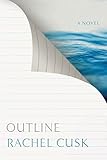 Outline by Rachel Cusk: First serialized in The Paris Review, Cusk’s new work is described by its publisher (FSG) as “a novel in ten conversations”, but I prefer Leslie Jamison’s description: “a series of searing psychic X-rays bleached by coastal light.” The woman at the center of these conversations is a writing teacher who travels to Greece to teach a workshop. Her portrait is revealed by her various interlocutors, beginning with her neighbor on a plane en route to Athens. (Hannah)
Outline by Rachel Cusk: First serialized in The Paris Review, Cusk’s new work is described by its publisher (FSG) as “a novel in ten conversations”, but I prefer Leslie Jamison’s description: “a series of searing psychic X-rays bleached by coastal light.” The woman at the center of these conversations is a writing teacher who travels to Greece to teach a workshop. Her portrait is revealed by her various interlocutors, beginning with her neighbor on a plane en route to Athens. (Hannah)
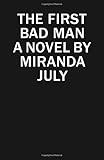 The First Bad Man by Miranda July: Miranda July, artist, filmmaker and author of the story collection No One Belongs Here More Than You, has written a debut novel about a woman named Cheryl who works at a women’s self-defense nonprofit, and, according to the jacket copy, is a “tightly-wound, vulnerable woman who lives alone with a perpetual lump in her throat.” Cheryl also believes she’s made love with her colleague “for many lifetimes, though they have yet to consummate in this one.” In her blurb, Lena Dunham writes that July’s novel “will make you laugh, cringe and recognize yourself in a woman you never planned to be.” While you prepare for the book’s release, check out The First Bad Man Store, where you can purchase real items that are mentioned in the novel. (Edan)
The First Bad Man by Miranda July: Miranda July, artist, filmmaker and author of the story collection No One Belongs Here More Than You, has written a debut novel about a woman named Cheryl who works at a women’s self-defense nonprofit, and, according to the jacket copy, is a “tightly-wound, vulnerable woman who lives alone with a perpetual lump in her throat.” Cheryl also believes she’s made love with her colleague “for many lifetimes, though they have yet to consummate in this one.” In her blurb, Lena Dunham writes that July’s novel “will make you laugh, cringe and recognize yourself in a woman you never planned to be.” While you prepare for the book’s release, check out The First Bad Man Store, where you can purchase real items that are mentioned in the novel. (Edan)
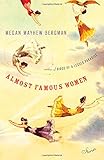 Almost Famous Women by Megan Mayhew Bergman: This new book is Bergman’s second short story collection, after her heartbreakingly humane debut, Birds of a Lesser Paradise. Her new collection takes inspiration from historical figures, women who attained a certain degree of celebrity but whose stories have never been fully imagined. We meet Lord Byron’s illegitimate daughter, Edna St. Vincent Millay’s sister, a conjoined twin, and a member of the first all-female integrated swing band. (Hannah)
Almost Famous Women by Megan Mayhew Bergman: This new book is Bergman’s second short story collection, after her heartbreakingly humane debut, Birds of a Lesser Paradise. Her new collection takes inspiration from historical figures, women who attained a certain degree of celebrity but whose stories have never been fully imagined. We meet Lord Byron’s illegitimate daughter, Edna St. Vincent Millay’s sister, a conjoined twin, and a member of the first all-female integrated swing band. (Hannah)
 Sweetland by Michael Crummey: The award-winning author of Galore returns to the land and the past of Newfoundland in his latest novel, which follows Moses Sweetland, the one man determined to stay on an island long after every one else has left, in defiance of both their warnings and their threats. As the Vancouver Sun puts it, Sweetland “demonstrates, as the best fiction does (and as Crummey’s novels always have) that the past is always with us, and that contemporary events are history embodied and in motion.” The novel also promises to be the best kind of ghost story, one in which memory and place are as haunting as the ghosts Sweetland believes he sees. (Kaulie)
Sweetland by Michael Crummey: The award-winning author of Galore returns to the land and the past of Newfoundland in his latest novel, which follows Moses Sweetland, the one man determined to stay on an island long after every one else has left, in defiance of both their warnings and their threats. As the Vancouver Sun puts it, Sweetland “demonstrates, as the best fiction does (and as Crummey’s novels always have) that the past is always with us, and that contemporary events are history embodied and in motion.” The novel also promises to be the best kind of ghost story, one in which memory and place are as haunting as the ghosts Sweetland believes he sees. (Kaulie)
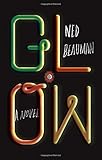 Glow by Ned Beauman: Multiple prize nods for each of his first two novels have set high expectations for Ned Beauman’s next effort. If the plot, which slingshots through England, Burma and Iceland, is any indication, the new book will match the ambition of his previous work. The story kicks off at a rave in London, where Raf, a sufferer of a chronic sleep disorder, is trying out a new drug, the eponymous “glow.” The drug leads him on a quest to uncover a massive conspiracy involving a multinational named Lacebark. (Thom)
Glow by Ned Beauman: Multiple prize nods for each of his first two novels have set high expectations for Ned Beauman’s next effort. If the plot, which slingshots through England, Burma and Iceland, is any indication, the new book will match the ambition of his previous work. The story kicks off at a rave in London, where Raf, a sufferer of a chronic sleep disorder, is trying out a new drug, the eponymous “glow.” The drug leads him on a quest to uncover a massive conspiracy involving a multinational named Lacebark. (Thom)
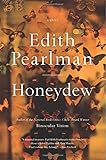 Honeydew by Edith Pearlman: Long a distinguished short-story writer, Pearlman emerged into the spotlight with her 2011 collection Binocular Vision. The new-found fame landed her a new publisher — Little, Brown — for her latest collection and a profile in the Times. It seems, in fact, that Pearlman is now assured the larger audience that eluded her for decades. (Max)
Honeydew by Edith Pearlman: Long a distinguished short-story writer, Pearlman emerged into the spotlight with her 2011 collection Binocular Vision. The new-found fame landed her a new publisher — Little, Brown — for her latest collection and a profile in the Times. It seems, in fact, that Pearlman is now assured the larger audience that eluded her for decades. (Max)
 Binary Star by Sarah Gerard: An introduction to a recently published excerpt of Binary Star suggests Sarah Gerard has a reputation for tackling her subject matter with unusual ferocity. In her debut, she turns her attention to eating disorders, focusing on a would-be teacher who struggles with anorexia. When the story begins, the teacher weighs ninety-eight pounds, and she reflects on the parallels between her own compulsions and the hopeless alcoholism of her lover. Gerard heightens the intensity, meticulously listing what her characters eat and drink. (Thom)
Binary Star by Sarah Gerard: An introduction to a recently published excerpt of Binary Star suggests Sarah Gerard has a reputation for tackling her subject matter with unusual ferocity. In her debut, she turns her attention to eating disorders, focusing on a would-be teacher who struggles with anorexia. When the story begins, the teacher weighs ninety-eight pounds, and she reflects on the parallels between her own compulsions and the hopeless alcoholism of her lover. Gerard heightens the intensity, meticulously listing what her characters eat and drink. (Thom)
 Frog by Mo Yan: In the latest novel by the Chinese Nobel laureate to get an English translation, Mo Yan takes on the one-child policy, depicting the lives of several characters throughout the lifespan of Communist China. Gugu, a gynecologist who delivered hundreds of babies during Mao Zedong’s reign, finds herself performing illegal abortions after the policy takes effect in the late seventies. Yan also depicts the sexism of the policy — his characters work hard to have sons and not daughters. (Thom)
Frog by Mo Yan: In the latest novel by the Chinese Nobel laureate to get an English translation, Mo Yan takes on the one-child policy, depicting the lives of several characters throughout the lifespan of Communist China. Gugu, a gynecologist who delivered hundreds of babies during Mao Zedong’s reign, finds herself performing illegal abortions after the policy takes effect in the late seventies. Yan also depicts the sexism of the policy — his characters work hard to have sons and not daughters. (Thom)
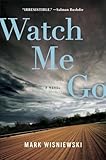 Watch Me Go by Mark Wisniewski: Wisniewski’s third novel channels the best of his profluent short fiction (Best American Short Stories, Virginia Quarterly Review). Watch Me Go speeds by with clipped chapters that follow Douglas “Deesh” Sharp, who helps haul the wrong junk: an oil drum that holds a corpse. Sharp does it for the money, and that bad decision haunts him until the final page of the novel. Wisniewski’s tale unfolds in the shadow of the Finger Lakes, New York racetracks, where, one character warns “in the long run, gamblers always lose.” Watch Me Go feels particularly apt to our national present, when police procedure is under constant scrutiny. Deesh is a victim of the system, and his redemption will only happen by fire. Wisniewski’s prose burns forward, but he knows when to slow the pace and make the reader feel Deesh’s injustice. (Nick R.)
Watch Me Go by Mark Wisniewski: Wisniewski’s third novel channels the best of his profluent short fiction (Best American Short Stories, Virginia Quarterly Review). Watch Me Go speeds by with clipped chapters that follow Douglas “Deesh” Sharp, who helps haul the wrong junk: an oil drum that holds a corpse. Sharp does it for the money, and that bad decision haunts him until the final page of the novel. Wisniewski’s tale unfolds in the shadow of the Finger Lakes, New York racetracks, where, one character warns “in the long run, gamblers always lose.” Watch Me Go feels particularly apt to our national present, when police procedure is under constant scrutiny. Deesh is a victim of the system, and his redemption will only happen by fire. Wisniewski’s prose burns forward, but he knows when to slow the pace and make the reader feel Deesh’s injustice. (Nick R.)
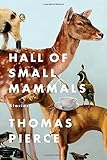 Hall of Small Mammals: Stories by Thomas Pierce: Pierce’s stories are reminiscent of the work of Laura van den Berg: his fiction exists in a space that’s just slightly offset from reality, not quite surrealism but not quite realism either. A woman admits to her boyfriend that she’s married to another man, but only in her dreams; in dreams she and her husband live out an ordinary domestic life. A man who works for a sinister television show that clones extinct animals delivers a miniature woolly mammoth to his mother. Pierce’s stories are beautifully written and suffused with mystery. (Emily)
Hall of Small Mammals: Stories by Thomas Pierce: Pierce’s stories are reminiscent of the work of Laura van den Berg: his fiction exists in a space that’s just slightly offset from reality, not quite surrealism but not quite realism either. A woman admits to her boyfriend that she’s married to another man, but only in her dreams; in dreams she and her husband live out an ordinary domestic life. A man who works for a sinister television show that clones extinct animals delivers a miniature woolly mammoth to his mother. Pierce’s stories are beautifully written and suffused with mystery. (Emily)
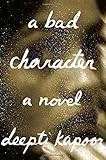 A Bad Character by Deepti Kapoor: “Delhi is no place for a woman in the dark,” Kapoor writes, “unless she has a man and a car or a car and a gun.” Idha, the narrator of Kapoor’s debut novel, is young, middle-class, and bored. Her car allows a measure of freedom, but not enough, and when she meets a somewhat unsuitable older man, the temptation to capsize her life with an affair is irresistible. Both a coming-of-age story and a portrait of New Delhi. (Emily)
A Bad Character by Deepti Kapoor: “Delhi is no place for a woman in the dark,” Kapoor writes, “unless she has a man and a car or a car and a gun.” Idha, the narrator of Kapoor’s debut novel, is young, middle-class, and bored. Her car allows a measure of freedom, but not enough, and when she meets a somewhat unsuitable older man, the temptation to capsize her life with an affair is irresistible. Both a coming-of-age story and a portrait of New Delhi. (Emily)
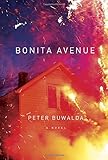 Bonita Avenue by Peter Buwalda: Buwalda’s first novel, translated from the Dutch, traces the dissolution of the outwardly solid Sigerius clan, updating the family saga by way of technical intricacy, narrative brio, and internet porn. In the Netherlands, the book was a bestseller, nominated for a dozen prizes. The English translation has drawn comparisons to Jonathan Franzen and the manic heyday of a young Philip Roth. (Garth)
Bonita Avenue by Peter Buwalda: Buwalda’s first novel, translated from the Dutch, traces the dissolution of the outwardly solid Sigerius clan, updating the family saga by way of technical intricacy, narrative brio, and internet porn. In the Netherlands, the book was a bestseller, nominated for a dozen prizes. The English translation has drawn comparisons to Jonathan Franzen and the manic heyday of a young Philip Roth. (Garth)
February:
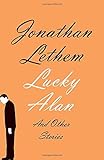 Lucky Alan: And Other Stories by Jonathan Lethem: Jonathan Lethem has made a career of capturing transition—whether it’s Brooklyn’s gentrification or his masterful blend of genre and literary fiction. He works with similar themes in his third short story collection, but this time, it’s people—not places—that are in limbo. From forgotten comic book characters stuck on a desert island to a father having his midlife crisis at SeaWorld, the nine stories in this collection explore everything from the quotidian to the absurd, all with Lethem’s signature humor, nuance, and pathos. (Tess)
Lucky Alan: And Other Stories by Jonathan Lethem: Jonathan Lethem has made a career of capturing transition—whether it’s Brooklyn’s gentrification or his masterful blend of genre and literary fiction. He works with similar themes in his third short story collection, but this time, it’s people—not places—that are in limbo. From forgotten comic book characters stuck on a desert island to a father having his midlife crisis at SeaWorld, the nine stories in this collection explore everything from the quotidian to the absurd, all with Lethem’s signature humor, nuance, and pathos. (Tess)
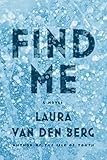 Find Me by Laura van den Berg: In most post-apocalyptic fiction, the end of the world is devastating, but what if it were a chance for renewal and redemption? Laura van den Berg is the perfect writer to answer this question as she has proven herself a master of scrutinizing fresh starts in her short story collections, What The World Will Look Like When All The Water Leaves Us and The Isle of Youth. In her first novel, a lost young woman named Joy is immune to an Alzheimer’s-like plague sweeping the country. With society’s rules broken down, Joy travels across America in search of the mother who abandoned her, making new friends and a new world along the way. (Tess)
Find Me by Laura van den Berg: In most post-apocalyptic fiction, the end of the world is devastating, but what if it were a chance for renewal and redemption? Laura van den Berg is the perfect writer to answer this question as she has proven herself a master of scrutinizing fresh starts in her short story collections, What The World Will Look Like When All The Water Leaves Us and The Isle of Youth. In her first novel, a lost young woman named Joy is immune to an Alzheimer’s-like plague sweeping the country. With society’s rules broken down, Joy travels across America in search of the mother who abandoned her, making new friends and a new world along the way. (Tess)
 Satin Island by Tom McCarthy: McCarthy’s fourth novel introduces us to a “corporate anthropologist” struggling to wrest an overarching account of contemporary existence from a miasma of distraction and dream. Perhaps he’s a stand-in for your average internet user. Or novelist. At any rate, expect ideas and delight in equal measure (assuming there’s a distinction); McCarthy’s reputation as a “standard bearer of the avant-garde” underrates how thoroughly he’s mastered the novelistic conventions he’s concerned to interrogate – and how fun he is to read. (Garth)
Satin Island by Tom McCarthy: McCarthy’s fourth novel introduces us to a “corporate anthropologist” struggling to wrest an overarching account of contemporary existence from a miasma of distraction and dream. Perhaps he’s a stand-in for your average internet user. Or novelist. At any rate, expect ideas and delight in equal measure (assuming there’s a distinction); McCarthy’s reputation as a “standard bearer of the avant-garde” underrates how thoroughly he’s mastered the novelistic conventions he’s concerned to interrogate – and how fun he is to read. (Garth)
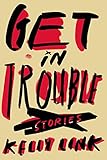 Get in Trouble by Kelly Link: Link’s last story collection for adults, Magic for Beginners, was something like the Jesus’ Son of Magical Realism. Its publication nearly a decade ago won the author a passionate cult; since then, mostly through word-of-mouth, its excellence has become a matter of broader consensus. Get in Trouble, her fourth collection, offers a vivid reminder of why. Beneath the attention-getting levity of Link’s conceits – ghosts, superheroes, “evil twins” – lies a patient, Munrovian attunement to the complexities of human nature. (Garth)
Get in Trouble by Kelly Link: Link’s last story collection for adults, Magic for Beginners, was something like the Jesus’ Son of Magical Realism. Its publication nearly a decade ago won the author a passionate cult; since then, mostly through word-of-mouth, its excellence has become a matter of broader consensus. Get in Trouble, her fourth collection, offers a vivid reminder of why. Beneath the attention-getting levity of Link’s conceits – ghosts, superheroes, “evil twins” – lies a patient, Munrovian attunement to the complexities of human nature. (Garth)
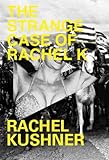 The Strange Case of Rachel K by Rachel Kushner: Before she published her two richly accomplished novels, Telex From Cuba and The Flamethrowers, Rachel Kushner wrote three short works of fiction that are collected in The Strange Case of Rachel K. In “The Great Exception,” a queen pines for an explorer as he makes his way to “Kuba.” In “Debouchement,” a faith healer’s illegal radio broadcasts give hope to an oppressed island populace. And in the title story, a French-style zazou dancer in pre-revolutionary Cuba negotiates the murky Havana night. The stories read like warm-up sketches for Telex From Cuba, and they’ll be of interest to Kushner’s ardent fans and future scholars. Others will be left hungering for something new from this outlandishly gifted writer. (Bill)
The Strange Case of Rachel K by Rachel Kushner: Before she published her two richly accomplished novels, Telex From Cuba and The Flamethrowers, Rachel Kushner wrote three short works of fiction that are collected in The Strange Case of Rachel K. In “The Great Exception,” a queen pines for an explorer as he makes his way to “Kuba.” In “Debouchement,” a faith healer’s illegal radio broadcasts give hope to an oppressed island populace. And in the title story, a French-style zazou dancer in pre-revolutionary Cuba negotiates the murky Havana night. The stories read like warm-up sketches for Telex From Cuba, and they’ll be of interest to Kushner’s ardent fans and future scholars. Others will be left hungering for something new from this outlandishly gifted writer. (Bill)
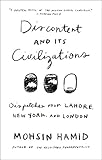 Discontent and its Civilizations: Dispatches from Lahore, New York, and London by Mohsin Hamid: Hamid’s latest is a collection of pieces that he wrote for various publications between 2000—the year his first novel, Moth Smoke, was published—and 2014. Hamid has lived in Pakistan, New York City, and London, and in works ranging from extended essays to brief op-eds, he brings personal insight and thoughtful analysis to issues ranging from the war on terror to the future of Pakistan to the costs and the promise of globalization. (Emily)
Discontent and its Civilizations: Dispatches from Lahore, New York, and London by Mohsin Hamid: Hamid’s latest is a collection of pieces that he wrote for various publications between 2000—the year his first novel, Moth Smoke, was published—and 2014. Hamid has lived in Pakistan, New York City, and London, and in works ranging from extended essays to brief op-eds, he brings personal insight and thoughtful analysis to issues ranging from the war on terror to the future of Pakistan to the costs and the promise of globalization. (Emily)
 Trigger Warning: Short Fictions and Disturbances by Neil Gaiman
Trigger Warning: Short Fictions and Disturbances by Neil Gaiman
Neil Gaiman is known for finding the fantastical in the everyday and the cracks in reality. So it should be no surprise that his third short story collection defies genre categorization, delving into fairy tales, horror, fantasy, poetry, and science fiction. Yet not all of it is unfamiliar: “Adventure Story” shares themes with his last novel The Ocean at the End of the Lane, and “Black Dog” brings him back to the American Gods world. (Tess)
 Suspended Sentences by Patrick Modiano: Patrick Modiano, winner of the 2014 Nobel Prize in Literature, will get a belated introduction to many American readers through Suspended Sentences. Originally published between 1988 and 1993, these three atmospheric novellas share Modiano’s recurring theme: an attempt to understand the secret histories of the Nazi Occupation of his native Paris. “Afterimage” is the shadow tale of a young writer cataloging the work of a haunted photographer. The title piece is a child’s-eye view of the gang of circus performers and crooks who raise him. In “Flowers of Ruin,” a double suicide triggers an investigation into gangsters and collaborators during the Occupation. It’s a delectably broad sampling from a writer with a doggedly narrow scope. American readers should rejoice. Update: The release date was moved up following the Nobel win and the book has already been published! (Bill)
Suspended Sentences by Patrick Modiano: Patrick Modiano, winner of the 2014 Nobel Prize in Literature, will get a belated introduction to many American readers through Suspended Sentences. Originally published between 1988 and 1993, these three atmospheric novellas share Modiano’s recurring theme: an attempt to understand the secret histories of the Nazi Occupation of his native Paris. “Afterimage” is the shadow tale of a young writer cataloging the work of a haunted photographer. The title piece is a child’s-eye view of the gang of circus performers and crooks who raise him. In “Flowers of Ruin,” a double suicide triggers an investigation into gangsters and collaborators during the Occupation. It’s a delectably broad sampling from a writer with a doggedly narrow scope. American readers should rejoice. Update: The release date was moved up following the Nobel win and the book has already been published! (Bill)
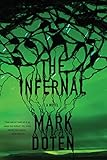 The Infernal by Mark Doten: After ten years of near-silence, we’re now in the full roar of fiction about the Iraq War. The most notable efforts to date have taken a realist slant, but Mark Doten’s first novel marks a sharp swerve into Coover territory: its key figure channels the voices of Condoleezza Rice, Paul Bremer, and Osama bin Laden. Early readers have reached for adjectives like “deranged,” “crazy,” and “insane,” in addition to the more usual “thrilling” and “dazzling.” (Garth)
The Infernal by Mark Doten: After ten years of near-silence, we’re now in the full roar of fiction about the Iraq War. The most notable efforts to date have taken a realist slant, but Mark Doten’s first novel marks a sharp swerve into Coover territory: its key figure channels the voices of Condoleezza Rice, Paul Bremer, and Osama bin Laden. Early readers have reached for adjectives like “deranged,” “crazy,” and “insane,” in addition to the more usual “thrilling” and “dazzling.” (Garth)
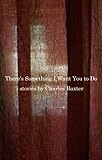 There’s Something I Want You to Do by Charles Baxter: We don’t often want authors to moralize, but Charles Baxter is a fictional minister we have been devout to throughout more than a dozen works of fiction, poetry, and nonfiction. Virtue and vice are inextricably related in his latest short stories. The collection features ten stories, five about virtue and five about vice, with the same characters participating in both and all motivated by the book’s titular request. What Baxter wants us to do is note human frailty, ambiguity, and its shameful depths. As fellow master of the form Lorrie Moore notes, “Baxter’s stories proceed with steady grace, nimble humor, quiet authority, and thrilling ingeniousness.” (Tess)
There’s Something I Want You to Do by Charles Baxter: We don’t often want authors to moralize, but Charles Baxter is a fictional minister we have been devout to throughout more than a dozen works of fiction, poetry, and nonfiction. Virtue and vice are inextricably related in his latest short stories. The collection features ten stories, five about virtue and five about vice, with the same characters participating in both and all motivated by the book’s titular request. What Baxter wants us to do is note human frailty, ambiguity, and its shameful depths. As fellow master of the form Lorrie Moore notes, “Baxter’s stories proceed with steady grace, nimble humor, quiet authority, and thrilling ingeniousness.” (Tess)
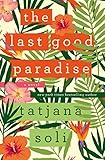 The Last Good Paradise by Tatjana Soli: The author of The Lotus Eaters (winner of the James Tait Black Memorial Prize) and The Forgetting Tree returns with a novel about a ragtag group of modern people attempting to escape their troubles on a remote Pacific island. Come for the scenery, the picaresque cast, and the comic reflections on the vagaries of contemporary life; stay for, as Kirkus puts it, Soli’s “idiosyncratic prose style.” (Lydia)
The Last Good Paradise by Tatjana Soli: The author of The Lotus Eaters (winner of the James Tait Black Memorial Prize) and The Forgetting Tree returns with a novel about a ragtag group of modern people attempting to escape their troubles on a remote Pacific island. Come for the scenery, the picaresque cast, and the comic reflections on the vagaries of contemporary life; stay for, as Kirkus puts it, Soli’s “idiosyncratic prose style.” (Lydia)
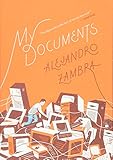 My Documents by Alejandro Zambra: “Camilo” was both the first thing I’d read by this young Chilean writer and one of the two or three best stories to run in The New Yorker last year. It appears alongside 10 other pieces in this collection, Zambra’s first book with McSweeney’s. (Garth)
My Documents by Alejandro Zambra: “Camilo” was both the first thing I’d read by this young Chilean writer and one of the two or three best stories to run in The New Yorker last year. It appears alongside 10 other pieces in this collection, Zambra’s first book with McSweeney’s. (Garth)
 I Am Radar by Reif Larsen: Reif Larsen’s follow-up to the bestselling The Selected Works of T.S. Spivet takes off from a premise halfway between Steve Martin and Judy Budnitz: “In 1975, a black child named Radar Radmanovic is mysteriously born to white parents.” But the ensuing 650 pages venture into realms of Pynchonian complexity and Irving-esque sweep. Erudite and voracious, skylarking and harrowing, they follow Radar around the world and into entanglements with some of the worst atrocities of the 20th Century. (Garth)
I Am Radar by Reif Larsen: Reif Larsen’s follow-up to the bestselling The Selected Works of T.S. Spivet takes off from a premise halfway between Steve Martin and Judy Budnitz: “In 1975, a black child named Radar Radmanovic is mysteriously born to white parents.” But the ensuing 650 pages venture into realms of Pynchonian complexity and Irving-esque sweep. Erudite and voracious, skylarking and harrowing, they follow Radar around the world and into entanglements with some of the worst atrocities of the 20th Century. (Garth)
 The Half Brother by Holly LeCraw: When Harvard graduate Charlie Garrett starts teaching at Abbott, an Episcopal boarding school in Massachusetts, the chair of the English department tells the young teacher that his students “all still believe in truth.” LeCraw’s gorgeous sentences dramatize a campus where literature stirs young hearts and minds. Charlie falls for a student, May Bankhead, daughter of the campus chaplain, and makes his feelings known when she returns home from college. Love turns to lust, and later to jealousy, when Charlie’s half brother, attractive Nick Garrett, arrives at Abbott to teach. Nick catches May, who has returned to teach at the school. “I need to be here,” she tells Charlie. LeCraw never eases the emotional tension. The novel begins with an epigraph from gifted teacher-writer Andre Dubus, who says he “learned to walk into a classroom wondering what I would say” rather than planning. The Half Brother captures his spirit, and the result is one of the finest school-set novels in recent memory. (Nick R.)
The Half Brother by Holly LeCraw: When Harvard graduate Charlie Garrett starts teaching at Abbott, an Episcopal boarding school in Massachusetts, the chair of the English department tells the young teacher that his students “all still believe in truth.” LeCraw’s gorgeous sentences dramatize a campus where literature stirs young hearts and minds. Charlie falls for a student, May Bankhead, daughter of the campus chaplain, and makes his feelings known when she returns home from college. Love turns to lust, and later to jealousy, when Charlie’s half brother, attractive Nick Garrett, arrives at Abbott to teach. Nick catches May, who has returned to teach at the school. “I need to be here,” she tells Charlie. LeCraw never eases the emotional tension. The novel begins with an epigraph from gifted teacher-writer Andre Dubus, who says he “learned to walk into a classroom wondering what I would say” rather than planning. The Half Brother captures his spirit, and the result is one of the finest school-set novels in recent memory. (Nick R.)
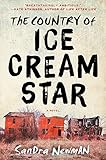 The Country of Ice Cream Star by Sandra Newman: Newman’s third novel is set in a world of children. Eighty years ago, a deadly pandemic swept across North America, and now every child is born with the disease; they begin showing symptoms around the age of eighteen or nineteen, and die soon after. When fifteen-year-old Ice Cream Star’s beloved older brother falls ill, she sets out after rumors of a cure. It’s a compelling story, but the most fascinating thing about Newman’s book is the language: the novel is written in the kind of beautifully warped English that one might expect to develop over eighty years without adults, and the prose often approaches a kind of wild poetry: “We flee like a dragonfly over water, we fight like ten guns, and we be bell to see.” (Emily)
The Country of Ice Cream Star by Sandra Newman: Newman’s third novel is set in a world of children. Eighty years ago, a deadly pandemic swept across North America, and now every child is born with the disease; they begin showing symptoms around the age of eighteen or nineteen, and die soon after. When fifteen-year-old Ice Cream Star’s beloved older brother falls ill, she sets out after rumors of a cure. It’s a compelling story, but the most fascinating thing about Newman’s book is the language: the novel is written in the kind of beautifully warped English that one might expect to develop over eighty years without adults, and the prose often approaches a kind of wild poetry: “We flee like a dragonfly over water, we fight like ten guns, and we be bell to see.” (Emily)
 All the Wrong Places: A Life Lost and Found by Philip Connors: After the suicide of his brother Connors finds himself in, as the title of his second memoir promises, many incongruous and wrong places, ranging from a hot-air balloon floating over New Mexico to a desk at the Wall Street Journal. A kind of prelude to his debut memoir, Fire Season, All The Wrong Places helps to explain why spending a decade in mountain solitude was so attractive to Connors. It’s also a look at the wandering years that often follow early loss, and has already drawn comparisons toCheryl Strayed’s seemingly infinitely-popular Wild. (Kaulie)
All the Wrong Places: A Life Lost and Found by Philip Connors: After the suicide of his brother Connors finds himself in, as the title of his second memoir promises, many incongruous and wrong places, ranging from a hot-air balloon floating over New Mexico to a desk at the Wall Street Journal. A kind of prelude to his debut memoir, Fire Season, All The Wrong Places helps to explain why spending a decade in mountain solitude was so attractive to Connors. It’s also a look at the wandering years that often follow early loss, and has already drawn comparisons toCheryl Strayed’s seemingly infinitely-popular Wild. (Kaulie)
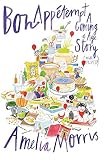 Bon Appétempt: A Coming of Age Story (With Recipes!) by Amelia Morris : As anyone who has ever creamed butter and sugar together in a mixing bowl knows, the precision of baking can also bring order to your life. With a few failed careers and a dysfunctional family, Amelia Morris needed to learn this lesson, too. From her blog of the same name to this memoir, she chronicles her transformation into an adult and cook, complete with a good dose of humor and recipes. (Tess)
Bon Appétempt: A Coming of Age Story (With Recipes!) by Amelia Morris : As anyone who has ever creamed butter and sugar together in a mixing bowl knows, the precision of baking can also bring order to your life. With a few failed careers and a dysfunctional family, Amelia Morris needed to learn this lesson, too. From her blog of the same name to this memoir, she chronicles her transformation into an adult and cook, complete with a good dose of humor and recipes. (Tess)
March:
 The Buried Giant by Kazuo Ishiguro: It’s been ten years since Never Let Me Go, so for Ishiguro fans, his new novel has been long-anticipated. His British publisher, Faber & Faber, offered up a somewhat oblique teaser early last year: it’s a book about “lost memories, love, revenge and war”; the website, which is currently just a (kind of intense) book trailer, doesn’t help much either—but then, if Never Let Me Go is any indicator, perhaps we’d all be better off without a lot of spoilery summaries in advance. (Tess)
The Buried Giant by Kazuo Ishiguro: It’s been ten years since Never Let Me Go, so for Ishiguro fans, his new novel has been long-anticipated. His British publisher, Faber & Faber, offered up a somewhat oblique teaser early last year: it’s a book about “lost memories, love, revenge and war”; the website, which is currently just a (kind of intense) book trailer, doesn’t help much either—but then, if Never Let Me Go is any indicator, perhaps we’d all be better off without a lot of spoilery summaries in advance. (Tess)
Ember Days by Nick Ripatrazone: Nick’s lovely meditations on teaching, writing, reading, and faith have come fast and furious on The Millions since he joined the site as a staff writer at the tail end of 2013. Nick is prolific–he’s the author of two novellas, two poetry collections, a book of criticism, and a short story collection, which he somehow managed to write while teaching public school in New Jersey and parenting twins. His newest collection of short stories will be published by Braddock Avenue Books; you can read the eponymous story, a haunting number about atomic power and retribution, the title of which is taken from the Christian liturgical calendar, at Story South. (Lydia)
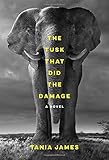 The Tusk That Did the Damage by Tania James: Tania James’s debut novel Atlas of Unknowns and follow-up story collection Aerogrammes were both published to critical acclaim. This second novel may be her true coming out. Says Karen Russell: “The Tusk that Did the Damage is spectacular, a pinwheeling multi-perspectival novel with a cast that includes my favorite character of recent memory, ‘the Gravedigger,’ an orphaned homicidal elephant.” The elephant is not only a primary character, but one of three narrators, who also include a poacher and a young American filmmaker. Ivory trading, poaching, an escaped elephant, a risky love affair, all set in rural South India and “blend[ing] the mythical and the political”—this novel seems to have it all. (Sonya)
The Tusk That Did the Damage by Tania James: Tania James’s debut novel Atlas of Unknowns and follow-up story collection Aerogrammes were both published to critical acclaim. This second novel may be her true coming out. Says Karen Russell: “The Tusk that Did the Damage is spectacular, a pinwheeling multi-perspectival novel with a cast that includes my favorite character of recent memory, ‘the Gravedigger,’ an orphaned homicidal elephant.” The elephant is not only a primary character, but one of three narrators, who also include a poacher and a young American filmmaker. Ivory trading, poaching, an escaped elephant, a risky love affair, all set in rural South India and “blend[ing] the mythical and the political”—this novel seems to have it all. (Sonya)

 Ashes in My Mouth, Sand in My Shoes and I Refuse by Per Petterson: Since Out Stealing Horses brought him international acclaim in 2007, many more of Norwegian novelist Per Petterson’s books have been translated into English, although not quite in the order he wrote them. Ashes in My Mouth, Sand in My Shoes, a collection of linked stories, was his first, published in Norway in 1987, and introduces young Arvid Jansen — a character he revisits in In the Wake and I Curse the River of Time — growing up in the outskirts of Oslo in the early 60s. I Refuse, meanwhile, is Petterson’s latest novel, published in Norway in 2012. It tells the story of Jim and Tommy, whose friendship was forged in their youth when Tommy stood up to his abusive father and needed Jim’s support. When they meet by chance 35 years later, they recall those painful events, as well as a night on a frozen lake that separated them until now. (Janet)
Ashes in My Mouth, Sand in My Shoes and I Refuse by Per Petterson: Since Out Stealing Horses brought him international acclaim in 2007, many more of Norwegian novelist Per Petterson’s books have been translated into English, although not quite in the order he wrote them. Ashes in My Mouth, Sand in My Shoes, a collection of linked stories, was his first, published in Norway in 1987, and introduces young Arvid Jansen — a character he revisits in In the Wake and I Curse the River of Time — growing up in the outskirts of Oslo in the early 60s. I Refuse, meanwhile, is Petterson’s latest novel, published in Norway in 2012. It tells the story of Jim and Tommy, whose friendship was forged in their youth when Tommy stood up to his abusive father and needed Jim’s support. When they meet by chance 35 years later, they recall those painful events, as well as a night on a frozen lake that separated them until now. (Janet)
 B & Me: A True Story of Literary Arousal by J.C. Hallman: Nicholson Baker’s characteristically idiosyncratic biography of John Updike, U and I, has become a literary classic. Now J.C. Hallman, himself a gifted practitioner of eclectic non-fiction with books on topics ranging from chess to Utopia, turns the lens on Baker. Publisher Simon & Schuster calls it “literary self-archaeology” and offers up comparisons to Geoff Dyer’s Out of Sheer Rage and Elif Batuman’s The Possessed, two books that have helped carve out a new genre of memoir that arrives refracted through the lens of the writers’ literary obsessions. (Max)
B & Me: A True Story of Literary Arousal by J.C. Hallman: Nicholson Baker’s characteristically idiosyncratic biography of John Updike, U and I, has become a literary classic. Now J.C. Hallman, himself a gifted practitioner of eclectic non-fiction with books on topics ranging from chess to Utopia, turns the lens on Baker. Publisher Simon & Schuster calls it “literary self-archaeology” and offers up comparisons to Geoff Dyer’s Out of Sheer Rage and Elif Batuman’s The Possessed, two books that have helped carve out a new genre of memoir that arrives refracted through the lens of the writers’ literary obsessions. (Max)
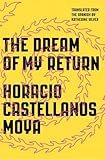 The Dream of My Return by Horacio Castellanos Moya: Castellanos Moya’s short novels are hallucinatory, mordant, and addictive – like Bernhard transplanted to warmer climes. And his translator, Katherine Silver, is admirably attuned to the twists and turns of his sentences. We’ve offered enthusiastic readings of Senselessness and The She-Devil in the Mirror. Here Castellanos Moya flirts again with autobiographical material, tracing the crack-up of “an exiled journalist in Mexico City [who] dreams of returning home to El Salvador.” (Garth)
The Dream of My Return by Horacio Castellanos Moya: Castellanos Moya’s short novels are hallucinatory, mordant, and addictive – like Bernhard transplanted to warmer climes. And his translator, Katherine Silver, is admirably attuned to the twists and turns of his sentences. We’ve offered enthusiastic readings of Senselessness and The She-Devil in the Mirror. Here Castellanos Moya flirts again with autobiographical material, tracing the crack-up of “an exiled journalist in Mexico City [who] dreams of returning home to El Salvador.” (Garth)
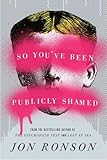 So You’ve Been Publicly Shamed by Jon Ronson: There’s a robust online conversation right now about public shaming: when someone says or does something offensive on the internet, does the collective outcry — a digital torch-wielding mob — go too far? Ronson’s previous books include The Psychopath Test and The Men Who Stare at Goats, and he’s a frequent contributor to This American Life and BBC Radio 4. In his newest book, billed as “a modern-day Scarlet Letter,” he examines the culture that’s grown up around public shaming, talking with people like Jonah Lehrer, who shook the publishing world with several rounds of plagiarism revelations, and Justine Sacco, who tweeted an offensive “joke” before boarding a transatlantic flight — and had what felt like the entire internet demanding that she be fired before her plane touched down. (Elizabeth)
So You’ve Been Publicly Shamed by Jon Ronson: There’s a robust online conversation right now about public shaming: when someone says or does something offensive on the internet, does the collective outcry — a digital torch-wielding mob — go too far? Ronson’s previous books include The Psychopath Test and The Men Who Stare at Goats, and he’s a frequent contributor to This American Life and BBC Radio 4. In his newest book, billed as “a modern-day Scarlet Letter,” he examines the culture that’s grown up around public shaming, talking with people like Jonah Lehrer, who shook the publishing world with several rounds of plagiarism revelations, and Justine Sacco, who tweeted an offensive “joke” before boarding a transatlantic flight — and had what felt like the entire internet demanding that she be fired before her plane touched down. (Elizabeth)
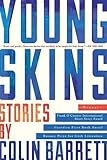 Young Skins by Colin Barrett: Ireland right now is ridiculously fertile ground for writers, though I guess that’s been said so often in the last century as to border on cliché. Still: Anne Enright, Paul Murray, Eimear McBride, Kevin Barry, Keith Ridgway…and 32-year-old Colin Barrett is, as they say, the coming man. This collection, winner of the Frank O’Connor International Short Story Award and the Guardian First Book Award, wastes no motion in its unsparing look at youth and masculinity in the small towns of the west. (Garth)
Young Skins by Colin Barrett: Ireland right now is ridiculously fertile ground for writers, though I guess that’s been said so often in the last century as to border on cliché. Still: Anne Enright, Paul Murray, Eimear McBride, Kevin Barry, Keith Ridgway…and 32-year-old Colin Barrett is, as they say, the coming man. This collection, winner of the Frank O’Connor International Short Story Award and the Guardian First Book Award, wastes no motion in its unsparing look at youth and masculinity in the small towns of the west. (Garth)
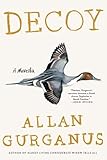 Decoy by Allan Gurganus: In 2013, 12 years after the appearance of his last full-length book, Allan Gurganus published Local Souls, a collection of three novellas. One of these, Decoy, which Dwight Garner called “the keeper” of the bunch, is indeed being kept, appearing as a separate publication this spring. Set in the fictional North Carolina town that has housed much of Gurganus’s previous work–including his beloved debut Oldest Living Confederate Widow Tells All—Decoy deals in small-town social relations and obscure homoerotic longings. Gurganus, known as a writer’s writer (he taught Donald Antrim’s first writing class), is reportedly at work on another massive full-length novel, “The Erotic History of a Southern Baptist Church.” (Lydia)
Decoy by Allan Gurganus: In 2013, 12 years after the appearance of his last full-length book, Allan Gurganus published Local Souls, a collection of three novellas. One of these, Decoy, which Dwight Garner called “the keeper” of the bunch, is indeed being kept, appearing as a separate publication this spring. Set in the fictional North Carolina town that has housed much of Gurganus’s previous work–including his beloved debut Oldest Living Confederate Widow Tells All—Decoy deals in small-town social relations and obscure homoerotic longings. Gurganus, known as a writer’s writer (he taught Donald Antrim’s first writing class), is reportedly at work on another massive full-length novel, “The Erotic History of a Southern Baptist Church.” (Lydia)
 Crow Fair by Thomas McGuane: A new release by gifted prose stylist McGuane should be cause for celebration by sentence lovers. McGuane long ago moved from the sardonic prose of his earlier novels (The Sporting Club) to lyric representations of the American West (The Cadence of Grass). In his own words: “As you get older, you should get impatient with showing off in literature. It is easier to settle for blazing light than to find a language for the real. Whether you are a writer or a bird-dog trainer, life should winnow the superfluous language. The real thing should become plain. You should go straight to what you know best.” The seventeen stories of Crow Fair model that sentiment. Start with the patient words of “A Prairie Girl,” but stay for the rest. (Nick R.)
Crow Fair by Thomas McGuane: A new release by gifted prose stylist McGuane should be cause for celebration by sentence lovers. McGuane long ago moved from the sardonic prose of his earlier novels (The Sporting Club) to lyric representations of the American West (The Cadence of Grass). In his own words: “As you get older, you should get impatient with showing off in literature. It is easier to settle for blazing light than to find a language for the real. Whether you are a writer or a bird-dog trainer, life should winnow the superfluous language. The real thing should become plain. You should go straight to what you know best.” The seventeen stories of Crow Fair model that sentiment. Start with the patient words of “A Prairie Girl,” but stay for the rest. (Nick R.)
 The Last Word by Hanif Kureishi: British man of letters Hanif Kureishi, OBE, has been, variously, a novelist, playwright, filmmaker, writer of pornography, victim of financial fraud, and sometimes reluctant professor of creative writing. His newest novel takes on another man of letters, Mamoon Azam, a fictional lout rumored to be based on the non-fictional lout V.S. Naipaul. Echoing Patrick French’s biography of Naipaul, Kureishi (who has assiduously avoided drawing comparisons between his novel and Naipaul) describes an imperious and irascible master of post-colonial fiction and his hapless biographer. (Lydia)
The Last Word by Hanif Kureishi: British man of letters Hanif Kureishi, OBE, has been, variously, a novelist, playwright, filmmaker, writer of pornography, victim of financial fraud, and sometimes reluctant professor of creative writing. His newest novel takes on another man of letters, Mamoon Azam, a fictional lout rumored to be based on the non-fictional lout V.S. Naipaul. Echoing Patrick French’s biography of Naipaul, Kureishi (who has assiduously avoided drawing comparisons between his novel and Naipaul) describes an imperious and irascible master of post-colonial fiction and his hapless biographer. (Lydia)
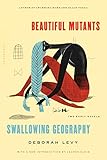
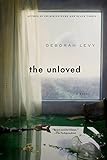 The Unloved and Beautiful Mutants and Swallowing Geography: Two Early Novels by Deborah Levy: For those who loved the oneiric Swimming Home, 2015 will be a great year as three Deborah Levy books—one new novel and two earlier works—are due to come out. Her latest, The Unloved, starts out as a sexually charged, locked door mystery set in a French chateau, then expands into a far-ranging tale about sadism and historical atrocities. Beautiful Mutants, her strange first novel about a Russian exile who is either a gifted seer or a talented fake, and Swallowing Geography, a European road novel with nods to Kerouac, are being reissued in June. (Matt)
The Unloved and Beautiful Mutants and Swallowing Geography: Two Early Novels by Deborah Levy: For those who loved the oneiric Swimming Home, 2015 will be a great year as three Deborah Levy books—one new novel and two earlier works—are due to come out. Her latest, The Unloved, starts out as a sexually charged, locked door mystery set in a French chateau, then expands into a far-ranging tale about sadism and historical atrocities. Beautiful Mutants, her strange first novel about a Russian exile who is either a gifted seer or a talented fake, and Swallowing Geography, a European road novel with nods to Kerouac, are being reissued in June. (Matt)
 Aquarium by David Vann: Vann, whose work we have examined previously at The Millions, returns with a new novel in March. Library Journal offers high praise: “Since electrifying the literary world five years ago with his debut novel, Legend of a Suicide, Vann has racked up an astonishing number of international awards. This lovely, wrenching novel should add to that list.” (Thom)
Aquarium by David Vann: Vann, whose work we have examined previously at The Millions, returns with a new novel in March. Library Journal offers high praise: “Since electrifying the literary world five years ago with his debut novel, Legend of a Suicide, Vann has racked up an astonishing number of international awards. This lovely, wrenching novel should add to that list.” (Thom)
 The Harder They Come by T.C. Boyle: When precisely, one wonders, does T.C. Boyle sleep? In the 35 years since his first book came out, Boyle has published 14 novels and more than 100 stories. The Harder They Come is the usual T.C. Boyle clown car of violent misfits, anti-authoritarian loons, and passionate losers set loose in a circus of serious-minded zaniness. After being declared a hero for stopping a hijacking, an ex-Marine returns home to Northern California to find that his mentally disturbed son has taken up with a hardcore member of a right-wing sect that refuses to recognize the authority of the state. (Michael)
The Harder They Come by T.C. Boyle: When precisely, one wonders, does T.C. Boyle sleep? In the 35 years since his first book came out, Boyle has published 14 novels and more than 100 stories. The Harder They Come is the usual T.C. Boyle clown car of violent misfits, anti-authoritarian loons, and passionate losers set loose in a circus of serious-minded zaniness. After being declared a hero for stopping a hijacking, an ex-Marine returns home to Northern California to find that his mentally disturbed son has taken up with a hardcore member of a right-wing sect that refuses to recognize the authority of the state. (Michael)
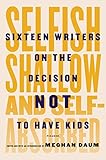 Selfish, Shallow, and Self-Absorbed: Sixteen Writers on the Decision Not to Have Kids, edited by Meghan Daum: Well, the title speaks for itself. “Controversial and provocative,” no doubt. This is the book I wanted to edit myself, so now I’m looking forward to reading it. Sixteen authors offer their reflections on this topic, including Lionel Shriver, Sigrid Nunez, Kate Christensen, Elliott Holt, Geoff Dyer, and Tim Kreider. Daum published her own story of not being a parent—but rather a mentor of teenagers—at The New Yorker back in September. The anthology’s title is likely both tongue-in-cheek and uncomfortably accurate; its cleverness, to my mind, is in the fact that the subtitle might easily omit the “not.” (Sonya)
Selfish, Shallow, and Self-Absorbed: Sixteen Writers on the Decision Not to Have Kids, edited by Meghan Daum: Well, the title speaks for itself. “Controversial and provocative,” no doubt. This is the book I wanted to edit myself, so now I’m looking forward to reading it. Sixteen authors offer their reflections on this topic, including Lionel Shriver, Sigrid Nunez, Kate Christensen, Elliott Holt, Geoff Dyer, and Tim Kreider. Daum published her own story of not being a parent—but rather a mentor of teenagers—at The New Yorker back in September. The anthology’s title is likely both tongue-in-cheek and uncomfortably accurate; its cleverness, to my mind, is in the fact that the subtitle might easily omit the “not.” (Sonya)
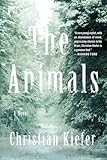 The Animals by Christian Kiefer: Christian Kiefer leaves behind the suburban cul-de-sacs of his first novel, The Infinite Tides, and takes us to rural Idaho for his follow-up, The Animals. Bill Reed is trying to move beyond his criminal past by managing a wildlife sanctuary for injured animals – raptors, a wolf, a bear. He plans to marry the local veterinarian and live a quiet life – until a childhood friend is released from prison and comes calling. Aimed at fans of Denis Johnson and Peter Matthiessen, this literary thriller is a story of friendship, grief, and the desire to live a blameless life. (Bill)
The Animals by Christian Kiefer: Christian Kiefer leaves behind the suburban cul-de-sacs of his first novel, The Infinite Tides, and takes us to rural Idaho for his follow-up, The Animals. Bill Reed is trying to move beyond his criminal past by managing a wildlife sanctuary for injured animals – raptors, a wolf, a bear. He plans to marry the local veterinarian and live a quiet life – until a childhood friend is released from prison and comes calling. Aimed at fans of Denis Johnson and Peter Matthiessen, this literary thriller is a story of friendship, grief, and the desire to live a blameless life. (Bill)
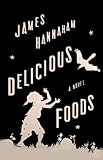 Delicious Foods by James Hannaham: I learned of James Hannaham’s sophomore novel back in 2013, at which point I mentioned to him how excited I was—about the title in particular: “You wrote a book called DELICIOUS FOODS?!” “The title is slightly misleading,” he replied. His publisher gives us this: “[A]n incisive look at race relations in America and an unflinching portrait of the pathos and absurdity of addiction.” Delicious or not, the story of Eddie and his mother Darlene promises to be both “blistering” and “inventive”—not to mention timely. (Sonya)
Delicious Foods by James Hannaham: I learned of James Hannaham’s sophomore novel back in 2013, at which point I mentioned to him how excited I was—about the title in particular: “You wrote a book called DELICIOUS FOODS?!” “The title is slightly misleading,” he replied. His publisher gives us this: “[A]n incisive look at race relations in America and an unflinching portrait of the pathos and absurdity of addiction.” Delicious or not, the story of Eddie and his mother Darlene promises to be both “blistering” and “inventive”—not to mention timely. (Sonya)
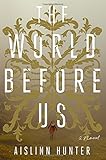 The World Before Us by Aislinn Hunter: In Hunter’s eerily compelling new novel, an archivist at a small London museum embarks on a final project before the museum’s impending closure: she is searching for information related to a woman who disappeared over a century ago from a Victorian asylum. The project holds some personal interest: when the archivist was fifteen years old, a little girl whom she was babysitting vanished in the woods near the asylum, and the archivist has begun to suspect that the two events were connected. (Emily)
The World Before Us by Aislinn Hunter: In Hunter’s eerily compelling new novel, an archivist at a small London museum embarks on a final project before the museum’s impending closure: she is searching for information related to a woman who disappeared over a century ago from a Victorian asylum. The project holds some personal interest: when the archivist was fifteen years old, a little girl whom she was babysitting vanished in the woods near the asylum, and the archivist has begun to suspect that the two events were connected. (Emily)
 The Sellout by Paul Beatty: Back in the ‘90s, The White-Boy Shuffle, Beatty’s first novel (after several poetry collections) was one of the bibles of my adolescence – furiously funny and ineffably sad. Two subsequent novels confirmed him as a scorching satirist in the vein of his contemporaries Sam Lipsyte and Gary Shteyngart. His latest outing features, in a supporting role, “the last surviving Little Rascal, Hominy Jenkins” – but its deeper concerns couldn’t be more timely: the precipitating incident is the death of the hero’s father in a police shootout, and the ultimate destination is the Supreme Court. (Garth)
The Sellout by Paul Beatty: Back in the ‘90s, The White-Boy Shuffle, Beatty’s first novel (after several poetry collections) was one of the bibles of my adolescence – furiously funny and ineffably sad. Two subsequent novels confirmed him as a scorching satirist in the vein of his contemporaries Sam Lipsyte and Gary Shteyngart. His latest outing features, in a supporting role, “the last surviving Little Rascal, Hominy Jenkins” – but its deeper concerns couldn’t be more timely: the precipitating incident is the death of the hero’s father in a police shootout, and the ultimate destination is the Supreme Court. (Garth)
 The Last Flight of Poxl West by Daniel Torday: Torday’s novella, The Sensualist, won the 2012 Jewish Book Award for debut fiction. In his first novel, The Last Flight of Poxl West, the titular character is a war hero and something of an idol to his teenage nephew, Eli Goldstein. Kirkus gave the novel a starred review, remarking, “While Torday is more likely to be compared to Philip Roth or Michael Chabon than Gillian Flynn, his debut novel has two big things in common with Gone Girl–it’s a story told in two voices, and it’s almost impossible to discuss without revealing spoilers. A richly layered, beautifully told and somehow lovable story about war, revenge and loss.” Rivka Galchen calls it both “brilliant” and “hilarious” and George Saunders says, “Torday is a prodigiously talented writer, with a huge heart.” I myself had the great pleasure of reading an advanced copy and I loved it. The final scene…what an ending! I still think about it. (Edan)
The Last Flight of Poxl West by Daniel Torday: Torday’s novella, The Sensualist, won the 2012 Jewish Book Award for debut fiction. In his first novel, The Last Flight of Poxl West, the titular character is a war hero and something of an idol to his teenage nephew, Eli Goldstein. Kirkus gave the novel a starred review, remarking, “While Torday is more likely to be compared to Philip Roth or Michael Chabon than Gillian Flynn, his debut novel has two big things in common with Gone Girl–it’s a story told in two voices, and it’s almost impossible to discuss without revealing spoilers. A richly layered, beautifully told and somehow lovable story about war, revenge and loss.” Rivka Galchen calls it both “brilliant” and “hilarious” and George Saunders says, “Torday is a prodigiously talented writer, with a huge heart.” I myself had the great pleasure of reading an advanced copy and I loved it. The final scene…what an ending! I still think about it. (Edan)
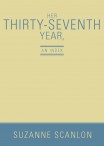 Her 37th Year: An Index by Suzanne Scanlon: Delivered in a series of pithy and emphatic observations, thoughts, and quotations, Suzanne Scanlon’s Her 37th Year: An Index examines love and desire and disappointment and writers and influence and ideas and passion and affairs and depression and writing and friendship and mothering and being a woman and aging. The potential excess of all this is balanced by its lean form, with each entry a vignette, quote, or observation. As a “fictional memoir”, Her 37th Year re-imagines form and redefines boundaries in a way similar to how Jenny Offil’s Dept. of Speculation revitalized the novel: the sum of its parts is flooring. (Anne)
Her 37th Year: An Index by Suzanne Scanlon: Delivered in a series of pithy and emphatic observations, thoughts, and quotations, Suzanne Scanlon’s Her 37th Year: An Index examines love and desire and disappointment and writers and influence and ideas and passion and affairs and depression and writing and friendship and mothering and being a woman and aging. The potential excess of all this is balanced by its lean form, with each entry a vignette, quote, or observation. As a “fictional memoir”, Her 37th Year re-imagines form and redefines boundaries in a way similar to how Jenny Offil’s Dept. of Speculation revitalized the novel: the sum of its parts is flooring. (Anne)
April:
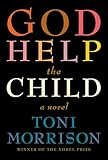 God Help the Child by Toni Morrison: Morrison was awarded the Nobel Prize for Literature more than two decades ago; her newest novel will be her sixth in that span of time, following 2012’s Home. A new Morrison novel, according to Slate, is “news that amounts to at least an 8 on the literary Richter scale.” It is, according to Knopf, “about the way childhood trauma shapes and misshapes the life of the adult,” and though it’s just 192 pages long, it promises to be more powerful than many books twice its length. (Elizabeth)
God Help the Child by Toni Morrison: Morrison was awarded the Nobel Prize for Literature more than two decades ago; her newest novel will be her sixth in that span of time, following 2012’s Home. A new Morrison novel, according to Slate, is “news that amounts to at least an 8 on the literary Richter scale.” It is, according to Knopf, “about the way childhood trauma shapes and misshapes the life of the adult,” and though it’s just 192 pages long, it promises to be more powerful than many books twice its length. (Elizabeth)
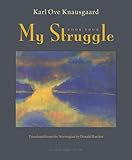 My Struggle: Book 4 by Karl Ove Knausgaard: There’s still time to jump on the Knausgaard bandwagon! English-speaking fans of Books 1-3 have been waiting almost a year for this translation, the fourth in a six-volume autobiographical novel by Norwegian writer Karl Ove Knausgaard — or just plain “Karl Ove” to those of us who have been following his confessional outpourings. Dwight Garner likened reading Knausgaard to “falling into a malarial fever”, and James Wood remarked that “even when I was bored, I was interested.” Book 4 covers Knausgaard’s late adolesence as he struggles to support his writing by teaching, falls in love with a 13-year-old student, and boozily greets the long arctic nights. (Hannah)
My Struggle: Book 4 by Karl Ove Knausgaard: There’s still time to jump on the Knausgaard bandwagon! English-speaking fans of Books 1-3 have been waiting almost a year for this translation, the fourth in a six-volume autobiographical novel by Norwegian writer Karl Ove Knausgaard — or just plain “Karl Ove” to those of us who have been following his confessional outpourings. Dwight Garner likened reading Knausgaard to “falling into a malarial fever”, and James Wood remarked that “even when I was bored, I was interested.” Book 4 covers Knausgaard’s late adolesence as he struggles to support his writing by teaching, falls in love with a 13-year-old student, and boozily greets the long arctic nights. (Hannah)
 Early Warning by Jane Smiley: This is the second installment in Smiley’s Last Hundred Years Trilogy, which follows a single Iowa farming family and its descendants through the American Century, from 1920 to 2020. The first book, Some Luck, which Smiley discussed in a wide-ranging Millions interview last fall, covers the Depression years and World War II. The new book starts in the depths of the Cold War and takes readers through Vietnam and into the Reagan era. The final volume, as yet untitled, is due out this fall. (Michael)
Early Warning by Jane Smiley: This is the second installment in Smiley’s Last Hundred Years Trilogy, which follows a single Iowa farming family and its descendants through the American Century, from 1920 to 2020. The first book, Some Luck, which Smiley discussed in a wide-ranging Millions interview last fall, covers the Depression years and World War II. The new book starts in the depths of the Cold War and takes readers through Vietnam and into the Reagan era. The final volume, as yet untitled, is due out this fall. (Michael)
A God in Ruins by Kate Atkinson: Kate Atkinson’s 2013 novel Life After Life followed Ursula Todd as she lived and re-lived her life in mid-century Britain. In this companion to the novel, we get the story of Ursula’s beloved younger brother Teddy, an aspiring poet and celebrated RAF pilot, who leaves a war he didn’t expect to survive to become a husband, father, and grandfather in an ever-changing world. (Janet)
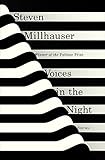 Voices in the Night by Steven Millhauser: A friend of mine keeps Steven Millhauser’s collection We Others by her bedside; she speaks of it, and Millhauser, like it’s 1963 and he’s a dark-eyed mop-top. Indeed, Millhauser inspires cult following: his stories do the impossible, getting way under your skin via immaculately simple prose and deceptively placid storylines. Voices in the Night collects 16 stories — “culled from religion and fables. . . Heightened by magic, the divine, and the uncanny, shot through with sly humor” – that promise to once again unsettle us with their strangeness and stun us with their beauty. (Sonya)
Voices in the Night by Steven Millhauser: A friend of mine keeps Steven Millhauser’s collection We Others by her bedside; she speaks of it, and Millhauser, like it’s 1963 and he’s a dark-eyed mop-top. Indeed, Millhauser inspires cult following: his stories do the impossible, getting way under your skin via immaculately simple prose and deceptively placid storylines. Voices in the Night collects 16 stories — “culled from religion and fables. . . Heightened by magic, the divine, and the uncanny, shot through with sly humor” – that promise to once again unsettle us with their strangeness and stun us with their beauty. (Sonya)
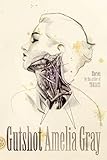 Gutshot by Amelia Gray: Gray’s stories come at you like fists wrapped in sirloin to pack a punch—they’re wonderfully idiosyncratic, visceral, and grotesque, with humor added for heft. Stories in her collection Museum of the Weird feature high-end cannibalism (eating monk’s tongues), a serial killer nicknamed “God” who cuts chests open and removes a rib, and a plate of hair served with soup. With the arrival of her next collection, Gutshot, Gray’s stories threaten to knock you out. (Anne)
Gutshot by Amelia Gray: Gray’s stories come at you like fists wrapped in sirloin to pack a punch—they’re wonderfully idiosyncratic, visceral, and grotesque, with humor added for heft. Stories in her collection Museum of the Weird feature high-end cannibalism (eating monk’s tongues), a serial killer nicknamed “God” who cuts chests open and removes a rib, and a plate of hair served with soup. With the arrival of her next collection, Gutshot, Gray’s stories threaten to knock you out. (Anne)
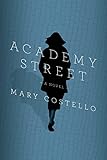 Academy Street by Mary Costello: Bravo to Mary Costello, a “Bloomer” whose first story collection The China Factory I wrote about here back in 2012. Her debut novel Academy Street—the story of Tess Lohan, who emigrates from 1940s western Ireland to New York City—is drawing comparisons to Colm Tóibín’s Brooklyn and John Williams’s Stoner. Academy Street has already been published in Europe and received the Eason Novel of the Year Irish Book Award. (Sonya)
Academy Street by Mary Costello: Bravo to Mary Costello, a “Bloomer” whose first story collection The China Factory I wrote about here back in 2012. Her debut novel Academy Street—the story of Tess Lohan, who emigrates from 1940s western Ireland to New York City—is drawing comparisons to Colm Tóibín’s Brooklyn and John Williams’s Stoner. Academy Street has already been published in Europe and received the Eason Novel of the Year Irish Book Award. (Sonya)
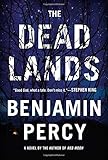 The Dead Lands by Benjamin Percy: Percy rides the increasingly porous border between literary and genre fiction in this post-apocalyptic thriller that re-imagines the Lewis and Clark expedition in an America brought low by a super flu and nuclear fallout. When word comes to Sanctuary – the remains of St. Louis – that life is better out West, Lewis Meriwether and Mina Clark set out in secrecy, hoping to expand their infant nation and reunite the States. Should be a snap, right? (Michael)
The Dead Lands by Benjamin Percy: Percy rides the increasingly porous border between literary and genre fiction in this post-apocalyptic thriller that re-imagines the Lewis and Clark expedition in an America brought low by a super flu and nuclear fallout. When word comes to Sanctuary – the remains of St. Louis – that life is better out West, Lewis Meriwether and Mina Clark set out in secrecy, hoping to expand their infant nation and reunite the States. Should be a snap, right? (Michael)
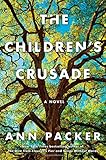 The Children’s Crusade by Ann Packer: The author of The Dive from Clausen’s Pier again displays her gift for delving into complicated families and the women who aren’t sure they want to be part of them. Narrated in turns by each of the four Blair children, The Children’s Crusade follows the twists and turns of the family’s fortunes from the day in 1954 when their father, Bill, impulsively buys a plot of wooded land south of San Francisco, through to the modern day. “Imagine, if you will, that Jonathan Franzen’s excellent novel, The Corrections, had likeable characters,” says one early reader on GoodReads. (Michael)
The Children’s Crusade by Ann Packer: The author of The Dive from Clausen’s Pier again displays her gift for delving into complicated families and the women who aren’t sure they want to be part of them. Narrated in turns by each of the four Blair children, The Children’s Crusade follows the twists and turns of the family’s fortunes from the day in 1954 when their father, Bill, impulsively buys a plot of wooded land south of San Francisco, through to the modern day. “Imagine, if you will, that Jonathan Franzen’s excellent novel, The Corrections, had likeable characters,” says one early reader on GoodReads. (Michael)
May:
 The Making of Zombie Wars by Aleksandr Hemon: His first full-length novel in seven years (since 2008’s The Lazarus Project), The Making of Zombie Wars is the story of Josh Levin, an ESL teacher in Chicago with a laptop full of hundreds of screenplay ideas, Zombie Wars chief among them. As Josh’s life goes from bad to worse to absurd — moving in with his girlfriend only to become entangled in the domestic disputes of her neighbors — he continues to work on the zombie movie that might get him away from it all. (Janet)
The Making of Zombie Wars by Aleksandr Hemon: His first full-length novel in seven years (since 2008’s The Lazarus Project), The Making of Zombie Wars is the story of Josh Levin, an ESL teacher in Chicago with a laptop full of hundreds of screenplay ideas, Zombie Wars chief among them. As Josh’s life goes from bad to worse to absurd — moving in with his girlfriend only to become entangled in the domestic disputes of her neighbors — he continues to work on the zombie movie that might get him away from it all. (Janet)
 Mislaid by Nell Zink: Zink’s first novel The Wallcreeper, published by the Dorothy Project, a feminist small press, made a big splash last year. Its backstory provided the hook: a fifty-year-old expat writes a novel on a dare from her pen pal Jonathan Franzen. But Zink’s sui generis sensibility was the main event: taut, acerbic, and free. She moves to a major press for her second book, a decade-hopping Southern family novel that tackles race, sexuality, and the wilderness of youth. (Garth)
Mislaid by Nell Zink: Zink’s first novel The Wallcreeper, published by the Dorothy Project, a feminist small press, made a big splash last year. Its backstory provided the hook: a fifty-year-old expat writes a novel on a dare from her pen pal Jonathan Franzen. But Zink’s sui generis sensibility was the main event: taut, acerbic, and free. She moves to a major press for her second book, a decade-hopping Southern family novel that tackles race, sexuality, and the wilderness of youth. (Garth)
The Familiar, Volume 1: One Rainy Day in May by Mark Z. Danielewski: On the jacket of David Mitchell’s The Bone Clocks is a blurb from Publishers Weekly: Is this “the most ambitious novel ever written or just the most Mitchell-esque?” One might ask the same question, mutatis mutandis, about Mark Danielewski’s The Familiar. Danielewski combines Mitchell’s fondness for formal innovation and genre tropes with an appealing indifference to questions of taste. At its best, this gives you House of Leaves, at its worst, Only Revolutions. One Rainy Day in May introduces us to “nine lives,” principally that of a 12-year-old girl who rescues “a creature as fragile as it is dangerous” – some kind of totemic/architectonic cat? Anyway, Volume 1 is 880 pages long. Word is, 26 more volumes are on the way, so this one had better be good. (Garth)
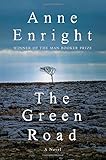 The Green Road by Anne Enright: Spanning three decades and three continents, this new book by Anne Enright centers on Rosaleen, the head of the Madigan family. Beginning in County Clare, the book follows the four Madigan children — Dan, Hanna, Emmet and Constance — as they set off on their own lives, travelling as far away as Mali to explore their adult selves. On Christmas Day, they all come home, and the issues of their family come back to them. In many ways, it’s a premise similar to that of Enright’s Booker-winning The Gathering. (Thom)
The Green Road by Anne Enright: Spanning three decades and three continents, this new book by Anne Enright centers on Rosaleen, the head of the Madigan family. Beginning in County Clare, the book follows the four Madigan children — Dan, Hanna, Emmet and Constance — as they set off on their own lives, travelling as far away as Mali to explore their adult selves. On Christmas Day, they all come home, and the issues of their family come back to them. In many ways, it’s a premise similar to that of Enright’s Booker-winning The Gathering. (Thom)
 A Hand Reached Down to Guide Me by David Gates: In a year rich with surrealist romps and boundary-blurring semi-memoirs, David Gates returns with a welcome injection of “the present palpable intimate” in the form of eleven stories and a novella. Gates is a natural and capacious realist, at once ironic and warm, in a way that makes the ordinary ambit of experience, from marriage to parenthood to getting old, seem as trippy as it really is. (Garth)
A Hand Reached Down to Guide Me by David Gates: In a year rich with surrealist romps and boundary-blurring semi-memoirs, David Gates returns with a welcome injection of “the present palpable intimate” in the form of eleven stories and a novella. Gates is a natural and capacious realist, at once ironic and warm, in a way that makes the ordinary ambit of experience, from marriage to parenthood to getting old, seem as trippy as it really is. (Garth)
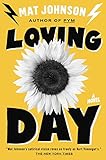 Loving Day by Mat Johnson: Johnson’s Pym, an entertaining riff on race and Edgar Allan Poe’s only novel, took us all the way to Antarctica. Loving Day (the title refers to a holiday celebrating interracial love) is set in a less remote locale, a black neighborhood in Philadelphia, but promises to be no less hallucinatory than its predecessor. A mixed race man returns from Wales, where both his marriage and his comic shop have failed, to inhabit a ghost-haunted mansion left to him by his father. He soon discovers the existence of a daughter, and the pair is drawn into a “utopian mixed-raced cult.” (Matt)
Loving Day by Mat Johnson: Johnson’s Pym, an entertaining riff on race and Edgar Allan Poe’s only novel, took us all the way to Antarctica. Loving Day (the title refers to a holiday celebrating interracial love) is set in a less remote locale, a black neighborhood in Philadelphia, but promises to be no less hallucinatory than its predecessor. A mixed race man returns from Wales, where both his marriage and his comic shop have failed, to inhabit a ghost-haunted mansion left to him by his father. He soon discovers the existence of a daughter, and the pair is drawn into a “utopian mixed-raced cult.” (Matt)
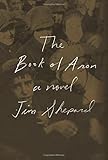 The Book of Aron by Jim Shepard: While Jim Shepard was a student at Brown, John Hawkes told him “You know, you’re not really a novelist, you’re really a short story writer.” Thankfully, good writers can be terribly wrong. Shepard’s long fiction is as fantastic as his classic stories. Shepard has always been a writer who exists outside of himself on the page, and this Holocaust-set novel is no different. The story focuses on Aron, a boy from the Warsaw Ghetto, who joins other children in smuggling goods to those “quarantined.” The novel also illuminates the life of Janusz Korczak, the real-life protector of Jewish children in ghetto orphanages (he once said “You do not leave a sick child in the night, and you do not leave children at a time like this.”). Serious material requires sensitive hands, and Shepard’s care creates beauty. (Nick R.)
The Book of Aron by Jim Shepard: While Jim Shepard was a student at Brown, John Hawkes told him “You know, you’re not really a novelist, you’re really a short story writer.” Thankfully, good writers can be terribly wrong. Shepard’s long fiction is as fantastic as his classic stories. Shepard has always been a writer who exists outside of himself on the page, and this Holocaust-set novel is no different. The story focuses on Aron, a boy from the Warsaw Ghetto, who joins other children in smuggling goods to those “quarantined.” The novel also illuminates the life of Janusz Korczak, the real-life protector of Jewish children in ghetto orphanages (he once said “You do not leave a sick child in the night, and you do not leave children at a time like this.”). Serious material requires sensitive hands, and Shepard’s care creates beauty. (Nick R.)
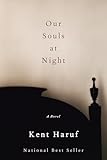 Our Souls at Night by Kent Haruf: Kent Haruf, who died last year at 71, will be best remembered for his 1999 novel Plainsong, a finalist for the National Book Award. It was set in the fictional eastern Colorado town of Holt, which Haruf (rhymes with sheriff) returns to yet again for his last novel, Our Souls at Night, finished shortly before his death. It’s the story of a widower named Louis Waters and a widow named Addie Moore who come together in Holt and begin sharing the aspirations, disappointments and compromises of their long lives. One critic likened Haruf’s prose to Pottery Barn furniture – with its “rustic lines,” “enduring style” and “aged patina.” His legion of fans wouldn’t have it any other way, and Our Souls at Night will not disappoint them. (Bill)
Our Souls at Night by Kent Haruf: Kent Haruf, who died last year at 71, will be best remembered for his 1999 novel Plainsong, a finalist for the National Book Award. It was set in the fictional eastern Colorado town of Holt, which Haruf (rhymes with sheriff) returns to yet again for his last novel, Our Souls at Night, finished shortly before his death. It’s the story of a widower named Louis Waters and a widow named Addie Moore who come together in Holt and begin sharing the aspirations, disappointments and compromises of their long lives. One critic likened Haruf’s prose to Pottery Barn furniture – with its “rustic lines,” “enduring style” and “aged patina.” His legion of fans wouldn’t have it any other way, and Our Souls at Night will not disappoint them. (Bill)
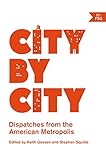 City by City: Dispatches from the American Metropolis edited by Keith Gessen and Stephen Squibb: Drawn from an n+1 series of the same name, City by City offers an insider’s glance into the state of America’s urban spaces. The mix of personal and historical essays explore issues such as crime, gentrification, and culture in cities as varied and far-reaching as Miami, Florida and Gold Rush, Alaska. Described as “a cross between Hunter S. Thompson, Studs Terkel, and the Great Depression–era WPA guides to each state in the Union,” City by City provides a collective portrait of the American city during the Great Recession. (Anne)
City by City: Dispatches from the American Metropolis edited by Keith Gessen and Stephen Squibb: Drawn from an n+1 series of the same name, City by City offers an insider’s glance into the state of America’s urban spaces. The mix of personal and historical essays explore issues such as crime, gentrification, and culture in cities as varied and far-reaching as Miami, Florida and Gold Rush, Alaska. Described as “a cross between Hunter S. Thompson, Studs Terkel, and the Great Depression–era WPA guides to each state in the Union,” City by City provides a collective portrait of the American city during the Great Recession. (Anne)
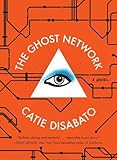 The Ghost Network by Catie Disabato: Disabato, who has written for The Millions, debuts with a high-concept mystery that looks to be a lot of fun. Pop stars aren’t known for avoiding the limelight, which is why the disappearance of a Lady Gaga-like singer inspires two women to track her down. Racing around Chicago in search of clues, they find themselves decoding arcane documents and ancient maps rather than liner notes as the disappearance turns out to involve a secret society. (Matt)
The Ghost Network by Catie Disabato: Disabato, who has written for The Millions, debuts with a high-concept mystery that looks to be a lot of fun. Pop stars aren’t known for avoiding the limelight, which is why the disappearance of a Lady Gaga-like singer inspires two women to track her down. Racing around Chicago in search of clues, they find themselves decoding arcane documents and ancient maps rather than liner notes as the disappearance turns out to involve a secret society. (Matt)
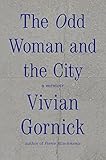 Odd Woman in the City by Vivian Gornick: For a sneak preview of Gornick’s witty and unsparing observations of city life, please read Gornick’s “Letter from Greenwich Village” in The Paris Review (it’s also collected in The Best American Essays 2014). A master memoirist, Gornick’s latest is an ode to New York City’s street life, old friends, and the fascinating joy of “living out conflicts, rather than fantasies.” (Hannah)
Odd Woman in the City by Vivian Gornick: For a sneak preview of Gornick’s witty and unsparing observations of city life, please read Gornick’s “Letter from Greenwich Village” in The Paris Review (it’s also collected in The Best American Essays 2014). A master memoirist, Gornick’s latest is an ode to New York City’s street life, old friends, and the fascinating joy of “living out conflicts, rather than fantasies.” (Hannah)
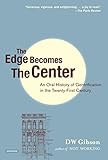 The Edge Becomes The Center by DW Gibson: Following up his critically-acclaimed oral history of the recession, Not Working (the title is a play on Studs Terkel’s classic oral history, Working), Gibson’s latest oral history portrays gentrifying New York City from all sides. Gibson interviews brokers, buyers, sellers, renters, landlords, artists, contractors, politicians and everyone in between to show how urban change feels to those living through it. (Hannah)
The Edge Becomes The Center by DW Gibson: Following up his critically-acclaimed oral history of the recession, Not Working (the title is a play on Studs Terkel’s classic oral history, Working), Gibson’s latest oral history portrays gentrifying New York City from all sides. Gibson interviews brokers, buyers, sellers, renters, landlords, artists, contractors, politicians and everyone in between to show how urban change feels to those living through it. (Hannah)
June:
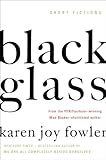 Black Glass: Short Fictions by Karen Joy Fowler: Fowler’s 2014 novel, We Are All Completely Beside Ourselves, won the PEN/Faulkner award and landed her on the Booker shortlist, one of two American finalists for the now American-friendly prize. This year will see her 1998 short story collection, Black Glass, re-released in hardcover. The stories — with influences and references from Carry Nation to Gulliver’s Travels to Albert Einstein to Tonto and the Lone Ranger — have been described as “occasionally puzzling but never dull,” and “ferociously imaginative and provocative.” (Elizabeth)
Black Glass: Short Fictions by Karen Joy Fowler: Fowler’s 2014 novel, We Are All Completely Beside Ourselves, won the PEN/Faulkner award and landed her on the Booker shortlist, one of two American finalists for the now American-friendly prize. This year will see her 1998 short story collection, Black Glass, re-released in hardcover. The stories — with influences and references from Carry Nation to Gulliver’s Travels to Albert Einstein to Tonto and the Lone Ranger — have been described as “occasionally puzzling but never dull,” and “ferociously imaginative and provocative.” (Elizabeth)
 Saint Mazie by Jami Attenberg: Saint Mazie is Attenberg’s much anticipated follow-up to her bestselling novel The Middlesteins, which was also a finalist for the LA Times book prize. Inspired by the life of a woman profiled in Joseph Mitchell’s Up in the Old Hotel, Saint Mazie follows Mazie Phillips, “the truth-telling proprietress of The Venice, the famed New York City movie theater,” through the Jazz Age and the Depression; her diaries, decades later, inspire a contemporary documentarian to find out who this intriguing woman really was. Therese Ann Fowler, author of Z: A Novel of Zelda Fitzgerald, calls the book “both a love song and a gut punch at once,” and Maggie Shipstead says it’s a “raw, boisterous, generous novel.” (Edan)
Saint Mazie by Jami Attenberg: Saint Mazie is Attenberg’s much anticipated follow-up to her bestselling novel The Middlesteins, which was also a finalist for the LA Times book prize. Inspired by the life of a woman profiled in Joseph Mitchell’s Up in the Old Hotel, Saint Mazie follows Mazie Phillips, “the truth-telling proprietress of The Venice, the famed New York City movie theater,” through the Jazz Age and the Depression; her diaries, decades later, inspire a contemporary documentarian to find out who this intriguing woman really was. Therese Ann Fowler, author of Z: A Novel of Zelda Fitzgerald, calls the book “both a love song and a gut punch at once,” and Maggie Shipstead says it’s a “raw, boisterous, generous novel.” (Edan)
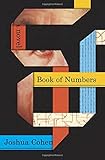 The Book of Numbers by Joshua Cohen: Cohen, 34, is as prolific as he is ambitious. Five years after his mega-novel, Witz (and three years after a lauded story collection), he returns with a long book about a novelist ghost-writing the autobiography of one of Silicon Valley’s new Masters of the Universe. The set-up should give Cohen’s caustic sensibility a target-rich environment, while the scope leaves his fierce intelligence ample room to play. (Garth)
The Book of Numbers by Joshua Cohen: Cohen, 34, is as prolific as he is ambitious. Five years after his mega-novel, Witz (and three years after a lauded story collection), he returns with a long book about a novelist ghost-writing the autobiography of one of Silicon Valley’s new Masters of the Universe. The set-up should give Cohen’s caustic sensibility a target-rich environment, while the scope leaves his fierce intelligence ample room to play. (Garth)
The Festival of Insignificance by Milan Kundera: Fifteen years after the publication of his last novel, Kundera returns with a (very brief) story of four friends in Paris who talk self-importantly about “sex, history, art, politics, and the meaning of life” while simultaneously celebrating their own insignificance (Library Journal). While these themes may be familiar to fans of Kundera’s past work (of which there are many – The Unbearable Lightness of Being has been enduringly popular since its publication in the mid-1980s) it will be exciting to see fresh writing from a modern master. (Kaulie)
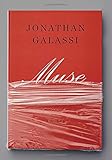 Muse by Jonathan Galassi: Over his long literary career, Galassi has done everything except write a novel. Now the FSG publisher, Italian translator, critic and poet has checked that off his list with a story that satirizes the industry he knows so well and sounds like an updating of Henry James’ The Aspern Papers. In the novel, a publisher tries to wrestle a famous female poet away from a rival, eventually securing a meeting in her Venetian palazzo and learning a revelatory secret. (Matt)
Muse by Jonathan Galassi: Over his long literary career, Galassi has done everything except write a novel. Now the FSG publisher, Italian translator, critic and poet has checked that off his list with a story that satirizes the industry he knows so well and sounds like an updating of Henry James’ The Aspern Papers. In the novel, a publisher tries to wrestle a famous female poet away from a rival, eventually securing a meeting in her Venetian palazzo and learning a revelatory secret. (Matt)
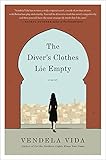 The Diver’s Clothes Lie Empty by Vendela Vida: Believer founding editor Vendela Vida’s trilogy of novels about “women in crisis” becomes a tetralogy with the debut of her latest, The Diver’s Clothes Lie Empty. As in her previous novels, the story involves a woman traveling abroad (in this case, Casablanca, Morocco). When the woman is robbed of her wallet and passport, she experiences distress and also unexpected freedom. The novel dips into All About Eve territory in this part-thriller, part-novel-of-ideas when the woman finds work as a celebrity stand-in and then begins to assume this alternate identity as her own. (Anne)
The Diver’s Clothes Lie Empty by Vendela Vida: Believer founding editor Vendela Vida’s trilogy of novels about “women in crisis” becomes a tetralogy with the debut of her latest, The Diver’s Clothes Lie Empty. As in her previous novels, the story involves a woman traveling abroad (in this case, Casablanca, Morocco). When the woman is robbed of her wallet and passport, she experiences distress and also unexpected freedom. The novel dips into All About Eve territory in this part-thriller, part-novel-of-ideas when the woman finds work as a celebrity stand-in and then begins to assume this alternate identity as her own. (Anne)
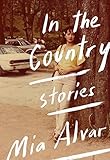 In the Country: Stories by Mia Alvar: Alvar is a frequent contributor to literary magazines—she’s been nominated twice for a Pushcart Prize—but this is her first short story collection. In the Country focuses on the Filipino diaspora, from Bahrain to Manila to New York. Alvar considers themes of alienation, displacement, the sometimes-troubling bonds of family, and the struggle to find a sense of home. (Emily)
In the Country: Stories by Mia Alvar: Alvar is a frequent contributor to literary magazines—she’s been nominated twice for a Pushcart Prize—but this is her first short story collection. In the Country focuses on the Filipino diaspora, from Bahrain to Manila to New York. Alvar considers themes of alienation, displacement, the sometimes-troubling bonds of family, and the struggle to find a sense of home. (Emily)
July:
 The Dying Grass by William T. Vollmann: The one living novelist who makes Joyce Carol Oates look like a slacker returns with the fifth volume of his “Seven Dreams” series, about the confrontations between native people and settlers in North America. This installment swings west to investigate the Nez Perce War of the late 19th Century, and is rumored to lean on dialogue to an unusual degree. The first of the Seven Dreams was published in 1990; at this rate, the series should conclude some time in 2027. (Garth)
The Dying Grass by William T. Vollmann: The one living novelist who makes Joyce Carol Oates look like a slacker returns with the fifth volume of his “Seven Dreams” series, about the confrontations between native people and settlers in North America. This installment swings west to investigate the Nez Perce War of the late 19th Century, and is rumored to lean on dialogue to an unusual degree. The first of the Seven Dreams was published in 1990; at this rate, the series should conclude some time in 2027. (Garth)
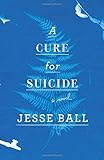 A Cure for Suicide by Jesse Ball: Jesse Ball’s novels are playful and clever and often quite grim, although this is not a contradiction. As he said in an interview: “a life of grief can be joyful too.” In his fifth novel, A Cure for Suicide, this again seems to be evident. A man and woman move in together: she is his guide and doctor who teaches him about life, defining for him the nature of objects and interaction and ways of being. That is, until another woman arrives and upends all he’s learned, making him question. (Anne)
A Cure for Suicide by Jesse Ball: Jesse Ball’s novels are playful and clever and often quite grim, although this is not a contradiction. As he said in an interview: “a life of grief can be joyful too.” In his fifth novel, A Cure for Suicide, this again seems to be evident. A man and woman move in together: she is his guide and doctor who teaches him about life, defining for him the nature of objects and interaction and ways of being. That is, until another woman arrives and upends all he’s learned, making him question. (Anne)
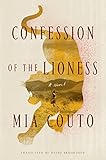 Confession of the Lioness by Mia Couto : Couto, a Mozambican who writes in Portuguese, has for years been considered one of Africa’s leading writers, fusing indigenous settings and traditions with influences from abroad. His first novel, Sleepwalking Land, was named one of the best African books of the 20th Century; his most recent, Tuner of Silences, was published by the terrific independent press Biblioasis, and was longlisted for the IMPAC Dublin award. In Confessions of the Lioness, a series of lion attacks in a remote village forces an eruption between men and women, modernity and tradition. It’s Couto’s first book to be published by FSG. (Garth)
Confession of the Lioness by Mia Couto : Couto, a Mozambican who writes in Portuguese, has for years been considered one of Africa’s leading writers, fusing indigenous settings and traditions with influences from abroad. His first novel, Sleepwalking Land, was named one of the best African books of the 20th Century; his most recent, Tuner of Silences, was published by the terrific independent press Biblioasis, and was longlisted for the IMPAC Dublin award. In Confessions of the Lioness, a series of lion attacks in a remote village forces an eruption between men and women, modernity and tradition. It’s Couto’s first book to be published by FSG. (Garth)
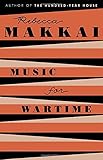 Music for Wartime by Rebecca Makkai: Fans of 2014’s The Hundred Year House don’t have to wait too long for more of Makkai’s clever and wonderfully imaginative work. Her third book and her first story collection, Music for Wartime offers a diverse array of stories, four of which are inspired by Makkai’s family history and her paternal grandparents’ involvement in 1930s Hungarian politics. (For more on this, check out this Harper’s Magazine interview with Makkai). Overall, the collection showcases the author’s talent for the short form–which has gotten her anthologized four (!) times in the Best American Short Stories series. (Edan)
Music for Wartime by Rebecca Makkai: Fans of 2014’s The Hundred Year House don’t have to wait too long for more of Makkai’s clever and wonderfully imaginative work. Her third book and her first story collection, Music for Wartime offers a diverse array of stories, four of which are inspired by Makkai’s family history and her paternal grandparents’ involvement in 1930s Hungarian politics. (For more on this, check out this Harper’s Magazine interview with Makkai). Overall, the collection showcases the author’s talent for the short form–which has gotten her anthologized four (!) times in the Best American Short Stories series. (Edan)
August:
 Flood of Fire by Amitav Ghosh: Following Sea of Poppies (shortlisted for the Man Booker Prize) and River of Smoke, Calcutta-born Amitav Ghosh brings his Ibis Trilogy to a rousing conclusion with Flood of Fire. It’s 1839, and after China embargoes the lucrative trade of opium grown on British plantations in India, the colonial government sends an expeditionary force from Bengal to Hong Kong to reinstate it. As the force arrives, war breaks out, and with it a blaze of naval engagements, embezzlement, profiteering and espionage. In bringing the first Opium War to crackling life, Ghosh has illuminated the folly of our own failed war on drugs. Historical fiction doesn’t get any timelier than this. (Bill)
Flood of Fire by Amitav Ghosh: Following Sea of Poppies (shortlisted for the Man Booker Prize) and River of Smoke, Calcutta-born Amitav Ghosh brings his Ibis Trilogy to a rousing conclusion with Flood of Fire. It’s 1839, and after China embargoes the lucrative trade of opium grown on British plantations in India, the colonial government sends an expeditionary force from Bengal to Hong Kong to reinstate it. As the force arrives, war breaks out, and with it a blaze of naval engagements, embezzlement, profiteering and espionage. In bringing the first Opium War to crackling life, Ghosh has illuminated the folly of our own failed war on drugs. Historical fiction doesn’t get any timelier than this. (Bill)
 The State We’re In: Maine Stories by Ann Beattie: A new collection of linked stories set in Maine from one of the short story masters. Call her the American Alice Munro, call her a New Yorker darling, call this the perfect summer read. (Hannah)
The State We’re In: Maine Stories by Ann Beattie: A new collection of linked stories set in Maine from one of the short story masters. Call her the American Alice Munro, call her a New Yorker darling, call this the perfect summer read. (Hannah)
The Marriage of Opposites by Alice Hoffman: In her 30 works of fiction, Alice Hoffman always finds the magical in the ordinary. Her narratives have roamed from ancient Israel (The Dovekeepers) to 20th-century New York City (The Museum of Extraordinary Things). Hoffman’s new novel, The Marriage of Opposites, transports us to the tropical island of St. Thomas in the early 1800s, where a girl named Rachel is growing up in the community of Jews who escaped the Inquisition. When her arranged marriage ends with her husband’s death, she begins an affair with her late husband’s dashing nephew. There is nothing ordinary about their son: his name is Camille Pissarro, and he will grow up to become an immortal father of Impressionism. (Bill)
September:
Purity by Jonathan Franzen: There are few American authors who can hit all the popular news outlets simply by releasing the title of their next novel (Purity), or launch a thousand hot takes with the publication of one grumpy book excerpt in The Guardian (an excerpt which, curiously, is no longer available at its previous URL as of this writing). Franzen haters were derisive at the news of his impending novel (Gawker’s headline was “Jonathan Franzen to Excrete Book Called Purity“), described by its publisher as “a multigenerational American epic that spans decades and continents,” with bonus “fabulist quality.” But some people believe, privately, that Franzen is such a good novelist that his detractors must just be jealous. And for those people, the new book can’t come quickly enough. (O Franzen! My Franzen!) (Lydia)
October:
City on Fire by Garth Risk Hallberg: We at The Millions look forward to reading fellow staff writer Garth Risk Hallberg’s debut novel. At over 900 pages, the novel takes place in 1977 New York and culminates in the city’s famed black-out. The Guardian reports, “The polished third-person narration conjures up a cast of characters living in a New York City divided by race and money – the reluctant heirs to a great fortune, two Long Island kids exploring downtown’s nascent punk scene, a gay schoolteacher from rural Georgia, an obsessive magazine reporter, a revolutionary cell planning to set the Bronx ablaze, a trader with a hole on his balance sheet and a detective who is trying to piece together the mystery which connects them all to a shooting in Central Park.” In anticipation of the book’s release, I suggest you dip into Garth’s essays here at The Millions, perhaps starting with his 2010 piece on long novels, “Is Big Back?” (Edan)
More from The Millions:
The good stuff: The Millions’ Notable articles
The motherlode: The Millions’ Books and Reviews
Like what you see? Learn about 5 insanely easy ways to Support The Millions, and follow The Millions on Twitter, Facebook, Tumblr.








